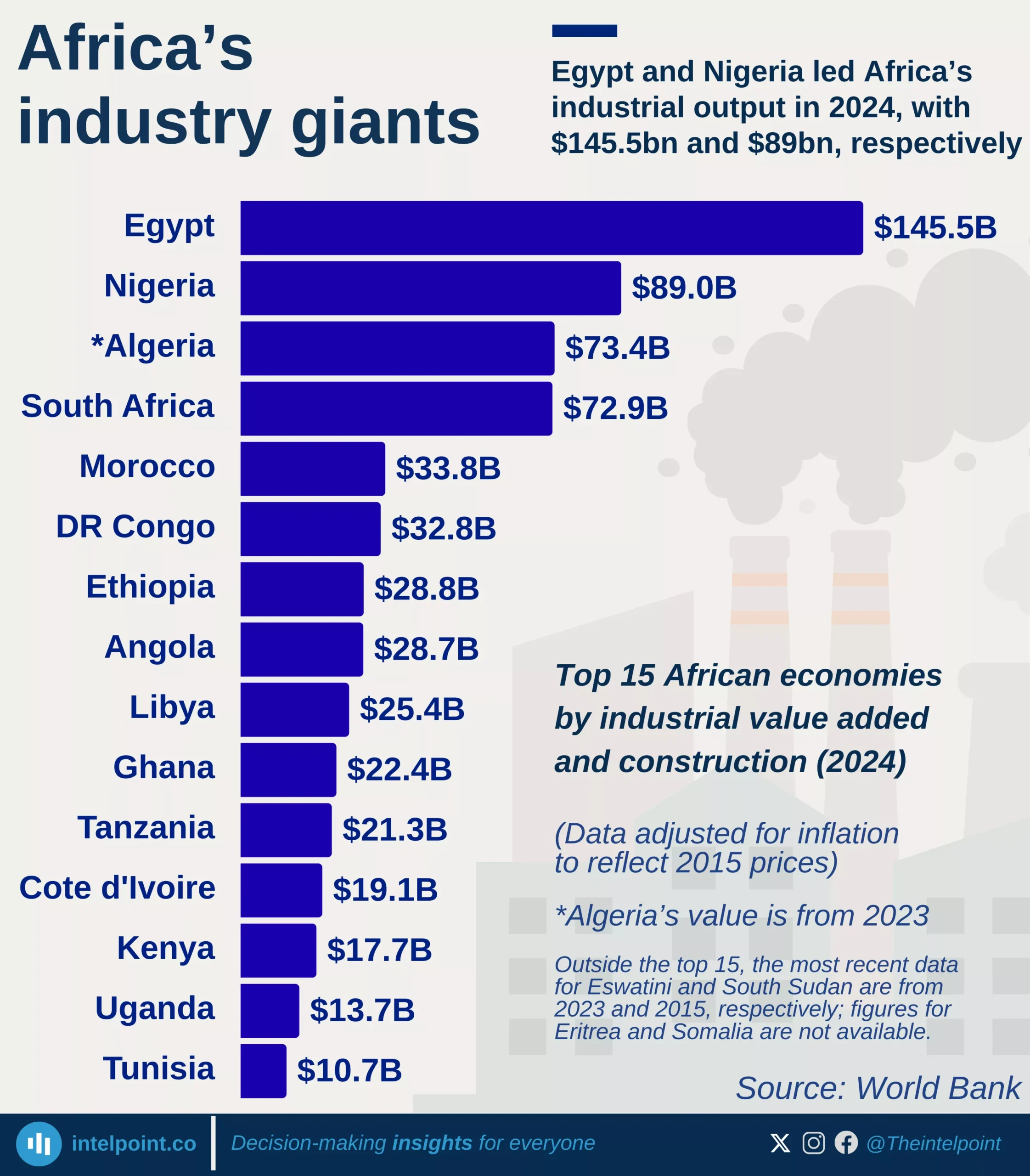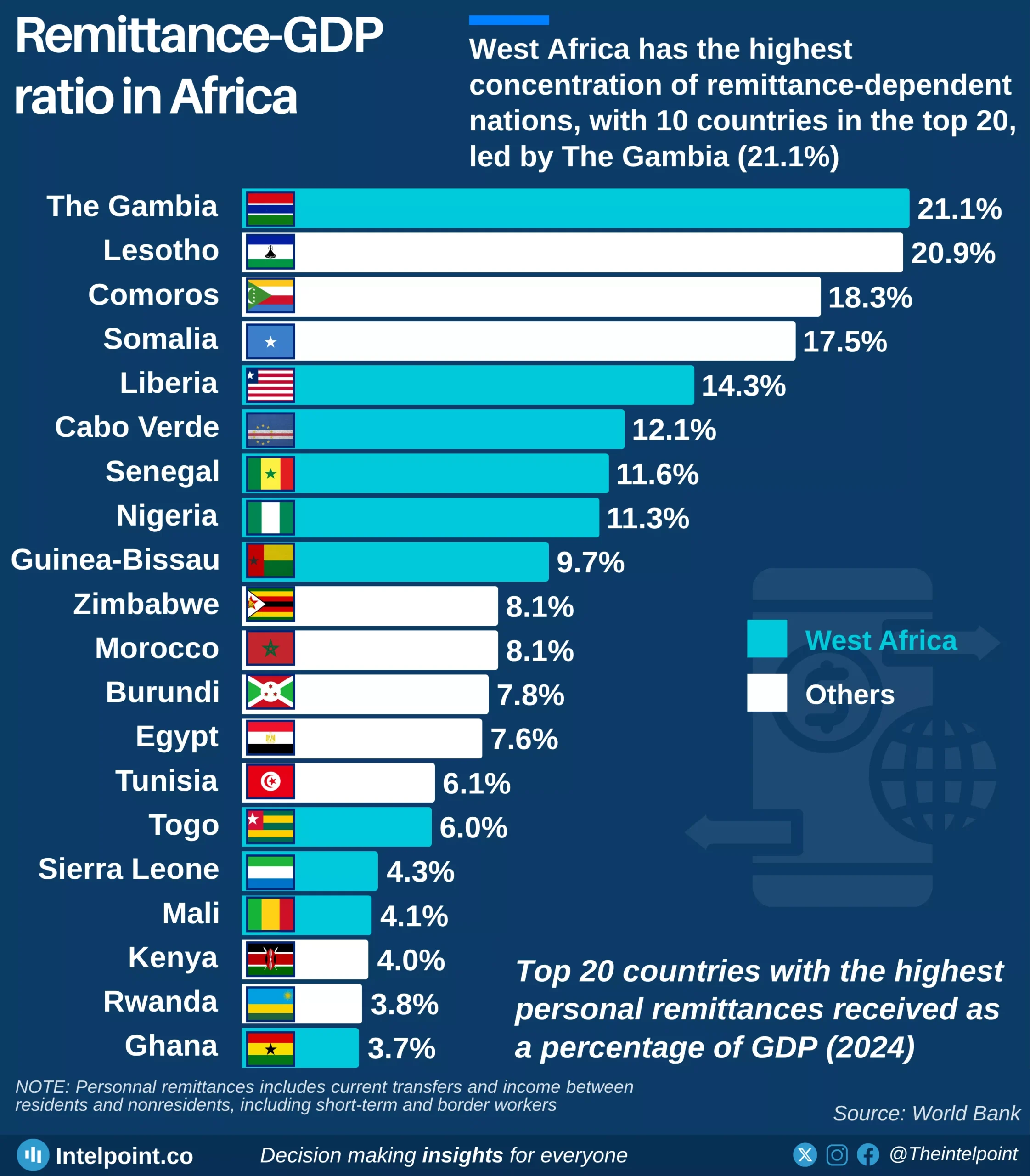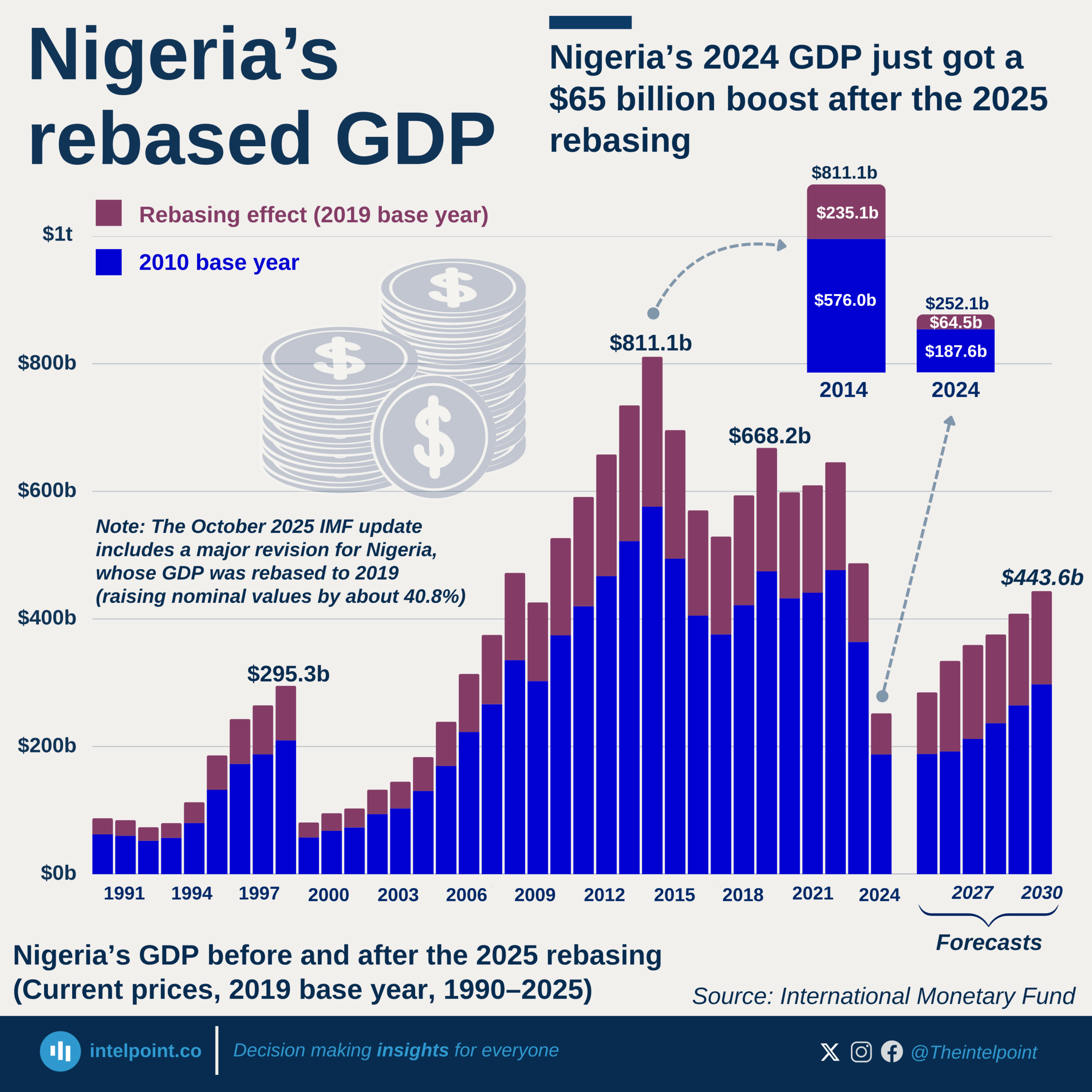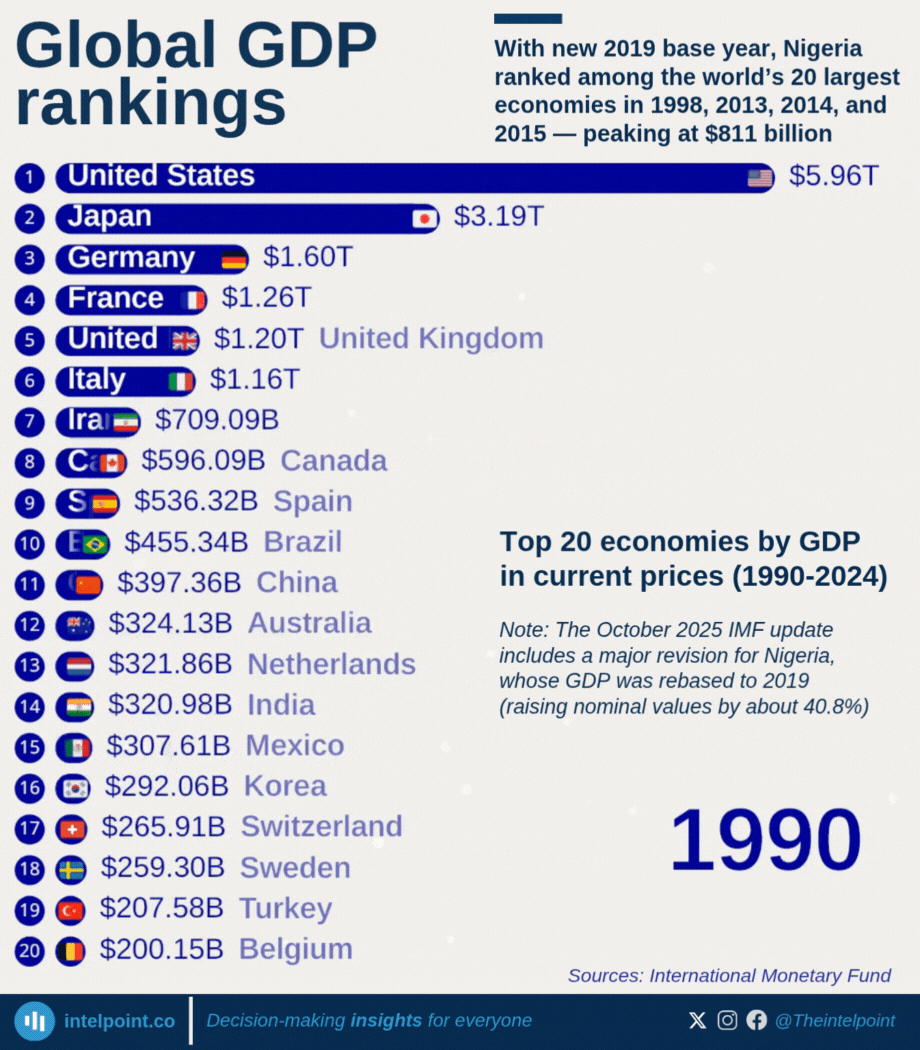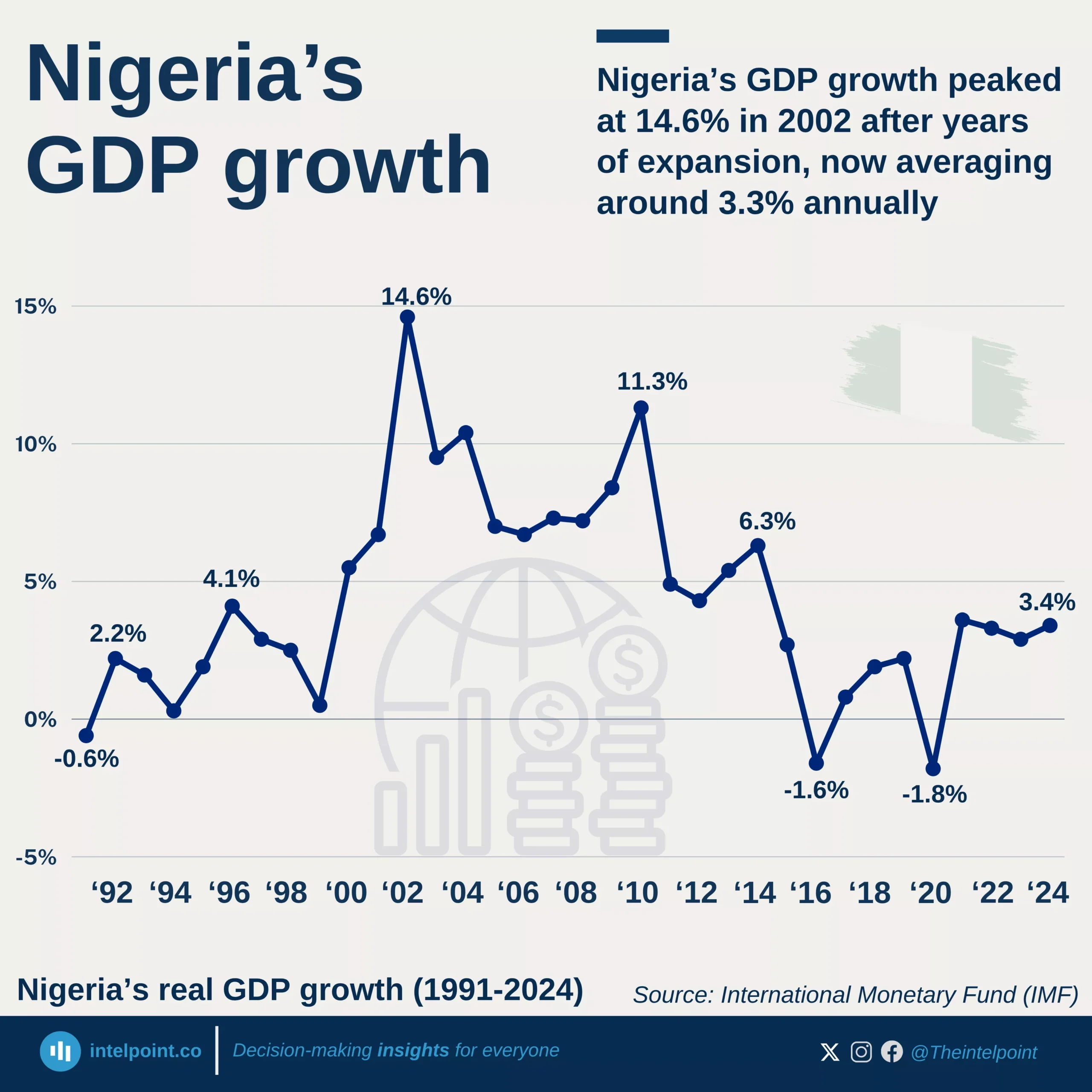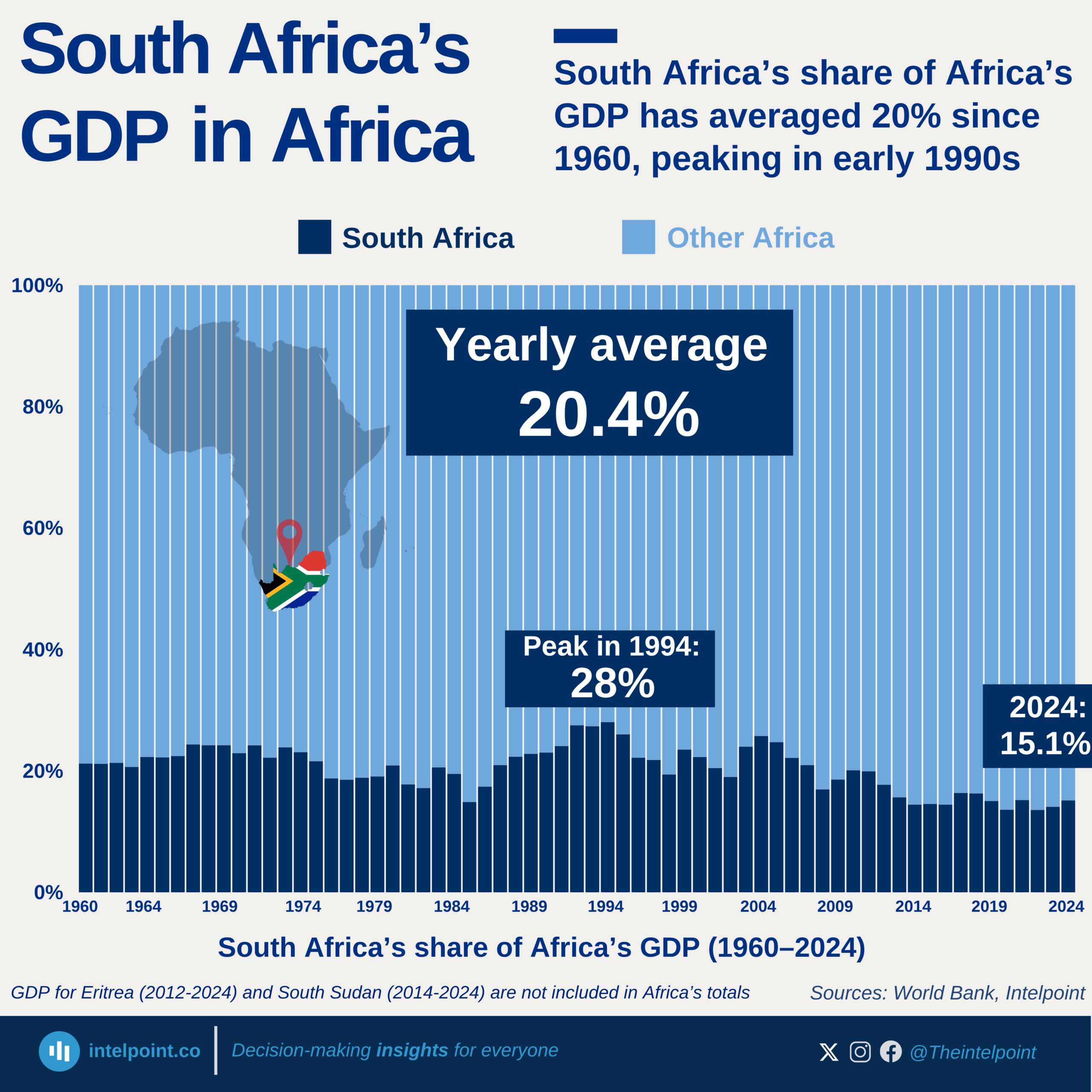Egypt’s GDP per capita has nearly doubled and a half since 2000, rising from $1,366 to $3,339 in 2024, with its most remarkable gains coming in the 2000s and early 2010s. The economy proved resilient to global and domestic shocks, weathering the 2008 financial crisis and political turbulence of the Arab Spring years, before accelerating into the 2020s.
By 2022, Egypt hit a record $4,233 per capita, the highest in its modern history, buoyed by infrastructure investment, energy sector expansion, and a growing services base. However, the two years that followed brought a reversal, with GDP per capita sliding back as external debt strains, currency volatility, and inflation weighed on household incomes. Even so, by 2024, Egypt remained well ahead of its early-2000s levels, ranking among the continent’s stronger middle-income performers.
